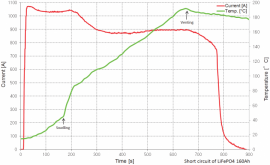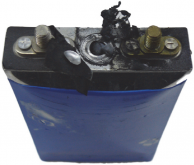I am building a LiFePO4 battery bank for my vehicle using 8x EVE 105Ah cells in a 2p4s configuration (12V, 210Ah). While not an EE, I am fairly comfortable with circuit design and protection. My question pertains to main circuit protection, specifically short circuit protection.
I see a lot of diagrams using something like a ANL, AMI or even MEGA type fuse for main circuit protection. Problem is those only have a max interrupt rating of 6000A/5000A/2000A respectively. While I could not find the short circuit current specification specific to my cells, I understand it could be greater than 6000A.
So the question I have is how are folks justifying the use of these fuse types for LiFePO4 battery bank main circuit protection? Especially battery banks larger than mine? Is the current rate of rise expected to be low enough so a lower rated fuse can clear?
The standard fuse I would expect to see in this application is the class T which is rated for 20kAIC, however I am not convinced that would necessary for my situation and am having a hard time justifying the high cost. I am considering using a MRBF fuse instead which is rated for 10kAIC in a Blue Sea 5196 fuse block. Any concerns with this or should I just use the class T?
Thoughts? TIA.
I see a lot of diagrams using something like a ANL, AMI or even MEGA type fuse for main circuit protection. Problem is those only have a max interrupt rating of 6000A/5000A/2000A respectively. While I could not find the short circuit current specification specific to my cells, I understand it could be greater than 6000A.
So the question I have is how are folks justifying the use of these fuse types for LiFePO4 battery bank main circuit protection? Especially battery banks larger than mine? Is the current rate of rise expected to be low enough so a lower rated fuse can clear?
The standard fuse I would expect to see in this application is the class T which is rated for 20kAIC, however I am not convinced that would necessary for my situation and am having a hard time justifying the high cost. I am considering using a MRBF fuse instead which is rated for 10kAIC in a Blue Sea 5196 fuse block. Any concerns with this or should I just use the class T?
Thoughts? TIA.




